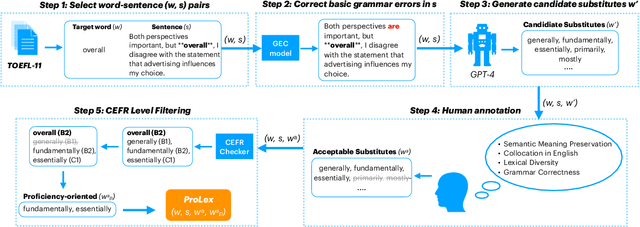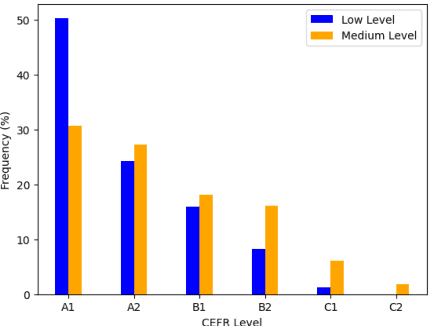Zixun Chen
DECOR: Improving Coherence in L2 English Writing with a Novel Benchmark for Incoherence Detection, Reasoning, and Rewriting
Jun 28, 2024Abstract:Coherence in writing, an aspect that second-language (L2) English learners often struggle with, is crucial in assessing L2 English writing. Existing automated writing evaluation systems primarily use basic surface linguistic features to detect coherence in writing. However, little effort has been made to correct the detected incoherence, which could significantly benefit L2 language learners seeking to improve their writing. To bridge this gap, we introduce DECOR, a novel benchmark that includes expert annotations for detecting incoherence in L2 English writing, identifying the underlying reasons, and rewriting the incoherent sentences. To our knowledge, DECOR is the first coherence assessment dataset specifically designed for improving L2 English writing, featuring pairs of original incoherent sentences alongside their expert-rewritten counterparts. Additionally, we fine-tuned models to automatically detect and rewrite incoherence in student essays. We find that incorporating specific reasons for incoherence during fine-tuning consistently improves the quality of the rewrites, achieving a result that is favored in both automatic and human evaluations.
ProLex: A Benchmark for Language Proficiency-oriented Lexical Substitution
Jan 21, 2024



Abstract:Lexical Substitution discovers appropriate substitutes for a given target word in a context sentence. However, the task fails to consider substitutes that are of equal or higher proficiency than the target, an aspect that could be beneficial for language learners looking to improve their writing. To bridge this gap, we propose a new task, language proficiency-oriented lexical substitution. We also introduce ProLex, a novel benchmark designed to assess systems' ability to generate not only appropriate substitutes but also substitutes that demonstrate better language proficiency. Besides the benchmark, we propose models that can automatically perform the new task. We show that our best model, a Llama2-13B model fine-tuned with task-specific synthetic data, outperforms ChatGPT by an average of 3.2% in F-score and achieves comparable results with GPT-4 on ProLex.
A Deep Learning Based Chatbot for Campus Psychological Therapy
Oct 09, 2019



Abstract:In this paper, we propose Evebot, an innovative, sequence to sequence (Seq2seq) based, fully generative conversational system for the diagnosis of negative emotions and prevention of depression through positively suggestive responses. The system consists of an assembly of deep-learning based models, including Bi-LSTM based model for detecting negative emotions of users and obtaining psychological counselling related corpus for training the chatbot, anti-language sequence to sequence neural network, and maximum mutual information (MMI) model. As adolescents are reluctant to show their negative emotions in physical interaction, traditional methods of emotion analysis and comforting methods may not work. Therefore, this system puts emphasis on using virtual platform to detect signs of depression or anxiety, channel adolescents' stress and mood, and thus prevent the emergence of mental illness. We launched the integrated chatbot system onto an online platform for real-world campus applications. Through a one-month user study, we observe better results in the increase in positivity than other public chatbots in the control group.
 Add to Chrome
Add to Chrome Add to Firefox
Add to Firefox Add to Edge
Add to Edge